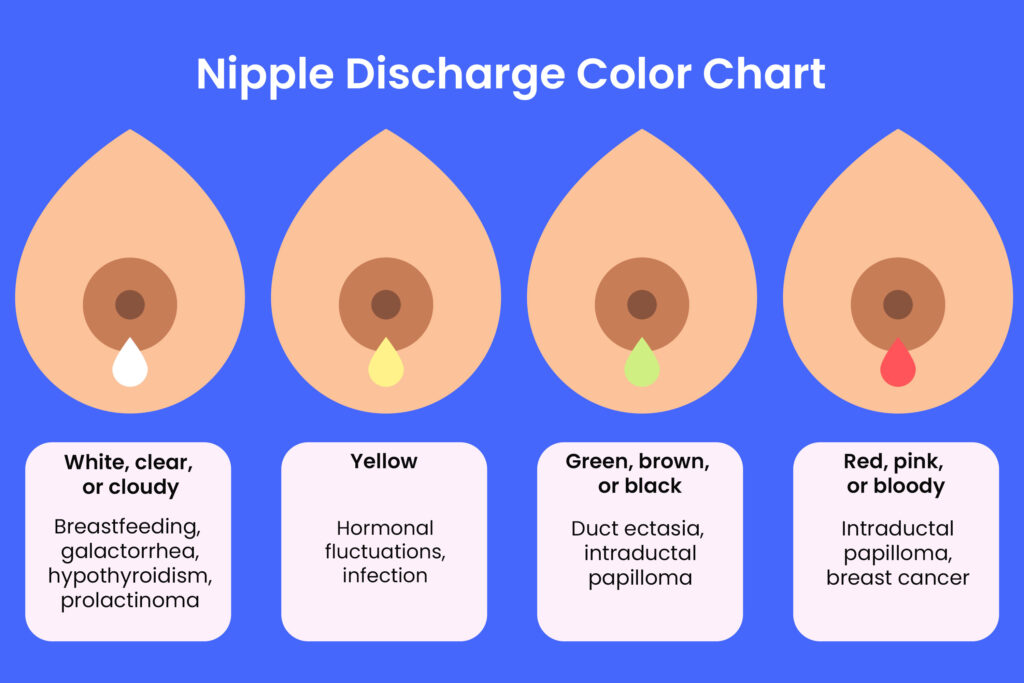FAQs

Discharge
Nipple Discharge When Not Pregnant: Causes, Concerns, and Next Steps
Yes, nipple discharge when not pregnant can happen — often due to hormonal imbalance or nipple stimulation. It’s usually harmless, but if the discharge is spontaneous, from one breast, or has a smell, consult a doctor. Avoid squeezing and book a session to assess your hormone levels.
What Is Nipple Discharge When Not Pregnant?
“Nipple discharge” refers to any fluid (clear, white/milky, yellow, green, or even bloody) coming from the nipple outside of breastfeeding or pregnancy. When it’s a milk-like (milky) discharge in someone not pregnant or breastfeeding, it’s called galactorrhea. Galactorrhea itself isn’t a disease but a sign that something, often hormonal—is influencing milk production pathways.
Common Causes of Nipple Discharge When Not Pregnant
Hormonal Imbalance
Medications & Birth Control
Infections or Inflammation
Excessive Stimulation
Should I Be Worried About Nipple Discharge When Not Pregnant?
Most cases are harmless, but it’s always best to get checked if it’s persistent or unusual.

White vaginal discharge every day is usually a sign of a healthy vagina that self-cleans and maintains proper pH balance. Vaginal discharge, medically known as leukorrhea, consists of fluids and cells that help keep tissues healthy and prevent infections. Normal discharge can range from clear to milky white and varies in amount throughout the menstrual cycle.
Why It Occurs Daily: Just like some people sweat more than others, some women naturally produce more vaginal discharge.
When to Remain Reassured: If discharge remains consistently odorless, pale or milky white, and without irritation, it reflects normal vaginal function. Many women naturally have more discharge than others. Over-cleaning or using harsh washes can disrupt the vaginal microbiome and paradoxically cause irritation.
When to Seek Care: Watch for changes such as itching, burning, strong or foul odor, or a different color (yellow, green, gray) or texture (e.g., cottage cheese–like). These may suggest infections (yeast infection, bacterial vaginosis, STIs) and warrant a healthcare visit.
For more on vaginal hygiene and health, see our blog “vaginal health“.
